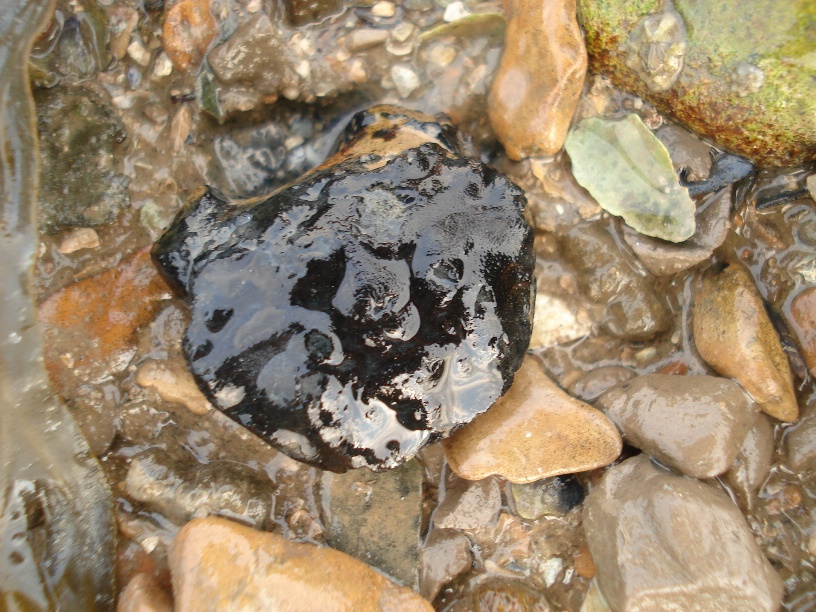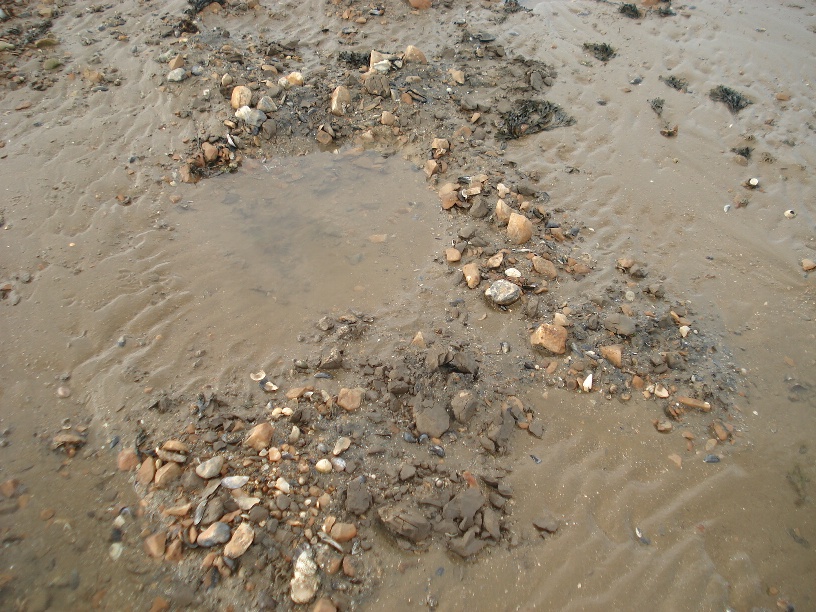The huge expanse of London Clay exposed on Seasalter’s foreshore lends the location a bleak atmosphere. It is not the most picturesque of fossil hunting sites, but occasionally stunning phosphatic fossils can be found. Perseverance is rewarded here.
DIRECTIONS
♦ From Whitstable, follow signs to Seasalter. From the A290, you will find yourself driving along Joy Lane.
♦ After about 800m, look out for a turning on your right over a single carriageway railway bridge. If you get to the shops, you have gone too far and missed it.
♦ Go over the bridge and turn immediately left into Admiralty Walk. There is a lay-by after a few tens of metres, where you can park.
♦ From the parking area, walk back the way you drove in and take a left down to the beach, opposite the railway bridge.
♦ Ref: 51.35073°N, 1.00856°E
PROFILE INFO
FIND FREQUENCY:♦♦♦♦ – It takes a while to ‘get your eye in’ at Seasalter, but once you know what to look for, a good number of nodules containing lobsters and crabs can be found. The very occasional shark’s tooth can also be found.
CHILDREN: ♦♦♦ – The London Clay foreshore is covered by mud up to 35cm deep near the pebble beach and old bait diggers’ holes are equally deep. Therefore, it is recommended that only older children be taken to this site.
ACCESS: ♦♦♦♦♦ – The foreshore at Seasalter is within 100m of free, on-road car parking. The only access problem to note is the thick mud that covers the foreshore for about 50m after the descent onto the pebble beach.
TYPE: – At this location, Fossils can only realistically be collected on the foreshore. They are mostly found in accumulations of pyrite, phosphatic nodules, cement stones and other pebbles.
FOSSIL HUNTING
The large majority of fossils found here are locked up in phosphatic nodules. These nodules are creamy in colour and, unfortunately, can resemble other, different rocks that contain no fossils. To further complicate things, the phosphatic nodules will often also have black stains on them from the breakdown of marine life, which can look exactly like some part of a crustacean showing through. Also, the nodules can be covered in barnacles or algae.
A typical crab-containing phosphatic nodule will be rounded, with two lobes where the pincers are concealed or just showing through to greater or lesser extents. Nodules will be of a creamy colour (not orange), the same colour as broken cement stones. They will not be angular in any place and will not be too thick. Once you have found a good nodule, it is worth holding onto it as a reference while you get your eye in. The nodules can be found in any area where there are accumulations of pyrite and other rocks. Some areas have more nodules than others – you just have to keep moving until you find a productive one. Very occasionally, you will see sharks’ teeth, especially Otodus obliquus.
However, there are very few fossils at Seasalter that do not require preparation. Therefore, if you are not skilled with air tools, it is probably not worth visiting this location. The nodules have iron in them and get harder towards the centre. They can also be ‘sticky’, making preparation difficult. In fact, this location is more one for the specialist than the amateur. Most people will come away disappointed, if they think they will find something special here. However, as is shown in the excellent new London Clay fossils of Kent and Essex book, some really fantastic finds have been made.

GEOLOGY
The foreshore at Seasalter has extensive London Clay deposits (of Eocene age), which contain the famous nodule bed.


SAFETY
Common sense when collecting at all locations should always be used and you should check tide times before visiting. This is a very flat location, where the tide retreats a good few hundred metres from the pebble beach. Fossils can be collected for a couple of hours either side of low tide and there is no chance of getting cut off. However, watch out for deep holes made by bait diggers and subsequently filled in with loose sand. These can be spotted by the large number of worm casts on their surfaces. You will get muddy at Seasalter, so wellies are highly recommended. Always make sure to tell someone where you are going and what time you expect to be back. If at all possible, make sure you carry a mobile phone and, if new to the location, try to go with a fellow fossil hunter.
EQUIPMENT
All you need is a good eye and something to put your nodules in. Most of the hard work will be done later at home, preparing the nodules using etchers, air tools or nails. However, a long-handled trowel may be useful to reduce the amount of bending over you have to do.
ACCESS RIGHTS
This site is a site of special scientific interest (SSSI). This means you can visit the site, but hammering the bedrock is not permitted. For full information about the reasons for the status of the site and restrictions, download the PDF from Natural England.
It is important to follow our ‘Code of Conduct’ when collecting fossils or visiting any site. Please also read our ‘Terms and Conditions‘
LINKS
♦ Buy Fossils, Crystals, Tools
♦ Location Discussions
♦ Deposits Magazine
♦ Join Fossil Hunts
♦ UK Fossils Network























